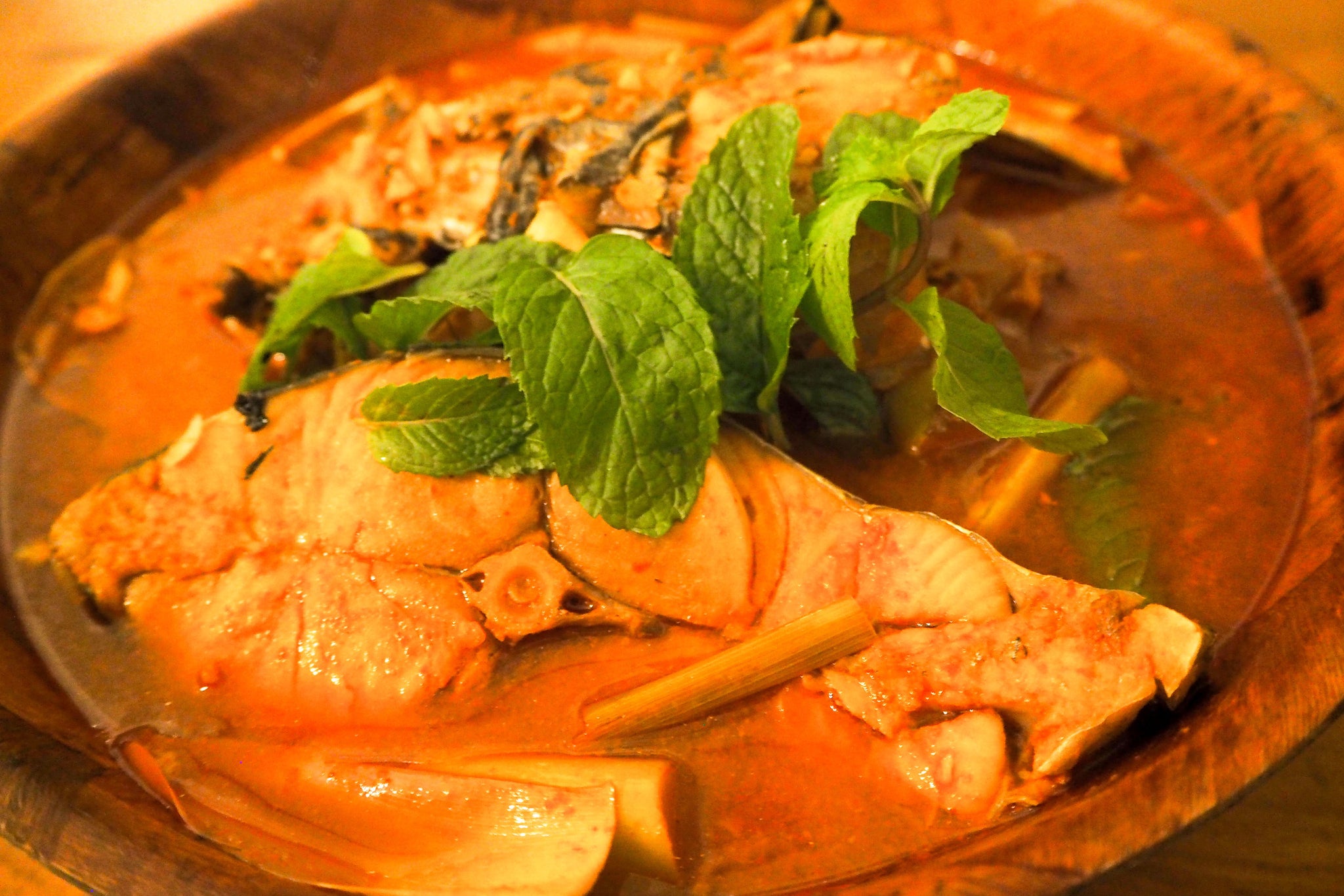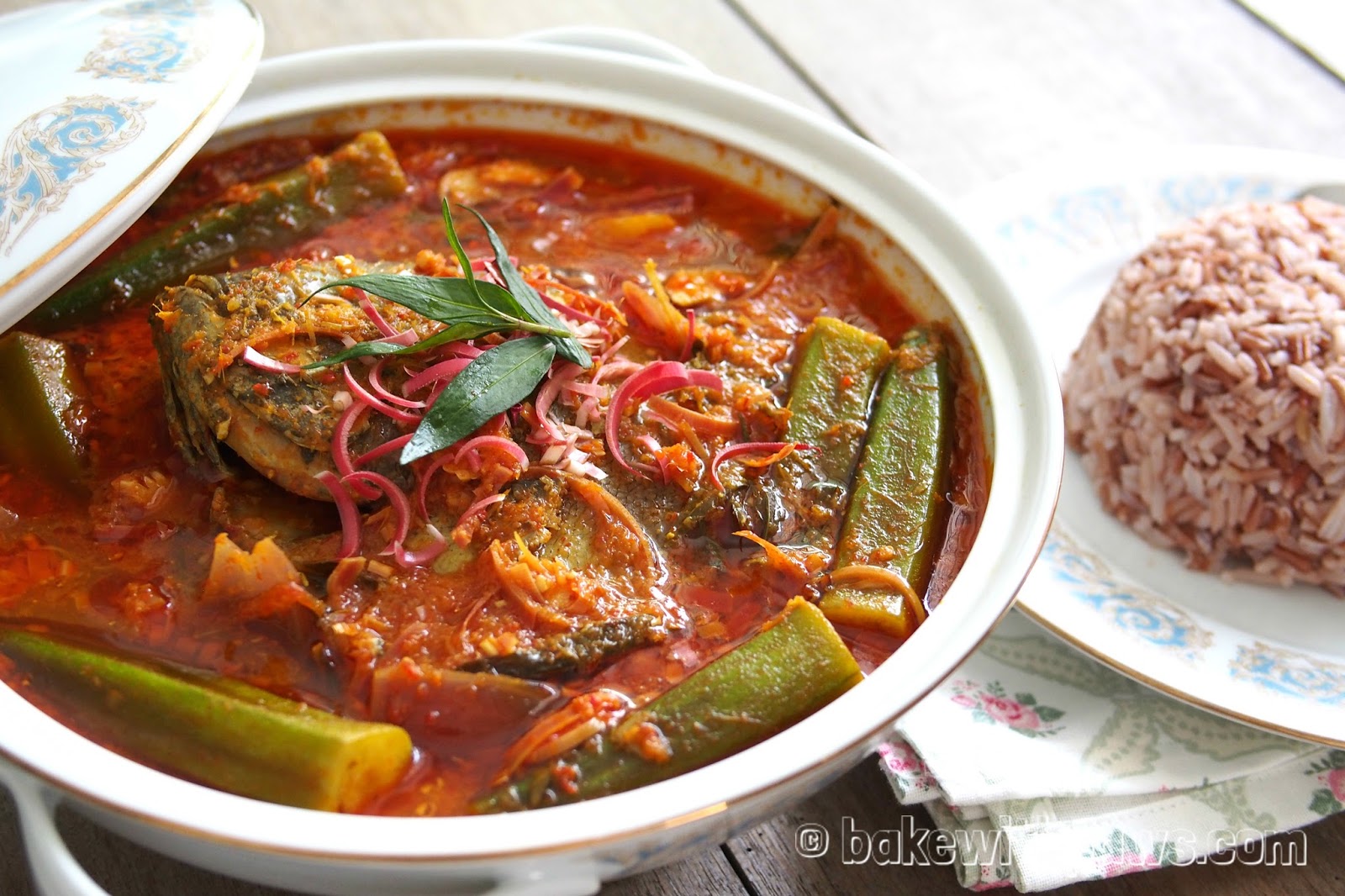Immerse yourself in the vibrant culinary tapestry of Singapore, where the tantalizing flavors of Assam fish dishes captivate the senses. Rooted in the rich heritage of Southeast Asia, Assam fish cuisine has become an integral part of the city-state’s gastronomic landscape, tantalizing locals and visitors alike with its distinctive blend of tangy, spicy, and aromatic notes.
Assam fish dishes in Singapore encompass a symphony of flavors, each with its unique story to tell. From the fiery sambal-infused variations to the milder tamarind-based renditions, these culinary creations reflect the diverse cultural influences that have shaped Singapore’s culinary identity.
Introduction
Assam fish, a beloved dish in Singapore, holds a significant place in the country’s culinary landscape. Its origins can be traced back to the Peranakan community, who brought their unique blend of Malay and Chinese flavors to the region. Assam fish has since become a staple in Singaporean households, enjoyed by people from all walks of life.The
popularity of Assam fish stems from its vibrant flavors and versatility. The dish is typically made with mackerel or red snapper, which is cooked in a spicy and sour tamarind-based broth. The broth is often flavored with turmeric, lemongrass, and chili peppers, giving it a complex and tantalizing taste.
Assam fish can be served with rice, noodles, or vegetables, making it a versatile dish that can be enjoyed in various ways.
Cultural Influences
The cultural influences on Assam fish are evident in its ingredients and cooking techniques. The use of tamarind, turmeric, and lemongrass is a nod to the Malay culinary tradition, while the addition of chili peppers and other spices reflects the Chinese influence.
The dish’s versatility also speaks to the multicultural nature of Singaporean cuisine, as it can be adapted to suit different tastes and preferences.
Popularity
Assam fish is a popular dish in Singapore for several reasons. Its unique flavor profile, which combines sour, spicy, and savory notes, appeals to a wide range of palates. The dish is also relatively easy to prepare, making it a favorite among home cooks.
Additionally, Assam fish is often associated with celebrations and gatherings, as it is a dish that can be shared and enjoyed by many.
Types of Assam Fish Dishes

In Singapore, Assam fish dishes are renowned for their distinctive flavors and culinary techniques. These dishes are a testament to the vibrant and diverse culinary heritage of the region.
Common Types
- Assam Pedas: This dish is a classic preparation that features fish cooked in a spicy and sour broth. The broth is typically made with tamarind, chili peppers, and other spices, resulting in a flavorful and tangy sauce. Popular fish choices for Assam Pedas include mackerel and red snapper.
- Assam Laksa: This is a popular noodle dish that combines the flavors of Assam fish with a rich and flavorful broth. The broth is made with tamarind, coconut milk, and various spices, creating a creamy and tangy base for the noodles. Assam Laksa is often served with a variety of toppings, such as fish, prawns, and vegetables.
- Assam Curry: This dish is a flavorful curry that incorporates the tangy flavors of Assam into a rich and aromatic sauce. The curry is typically made with a base of coconut milk, tamarind, and spices, resulting in a complex and satisfying dish. Assam Curry is often served with rice or bread.
Ingredients and Spices
Assam fish recipes in Singapore feature a tantalizing blend of flavors, achieved through the use of essential ingredients and spices.
The star ingredient, of course, is fish, typically firm-fleshed varieties like mackerel or red snapper. Tamarind, a souring agent, adds a tangy and slightly sweet note. Turmeric provides a vibrant yellow hue and earthy flavor, while chili peppers bring a fiery kick to the dish.
Sourcing Ingredients
These ingredients can be easily found in wet markets and grocery stores in Singapore. Tamarind is available in both fresh and paste form, while turmeric and chili peppers can be purchased whole or ground.
Cooking Techniques
Assamese cuisine employs a diverse array of cooking techniques to enhance the flavors and textures of its fish dishes. Simmering, frying, and grilling are the most prevalent methods, each contributing unique characteristics to the final product.
Simmering
Simmering involves cooking fish in a flavorful liquid, such as a broth or coconut milk, over low heat for an extended period. This gentle cooking process allows the fish to absorb the flavors of the liquid while retaining its delicate texture.
Assamese cooks often simmer fish in a flavorful broth made from onions, tomatoes, ginger, garlic, and spices, creating a rich and aromatic dish.
Frying
Frying is another popular cooking technique for Assam fish dishes. Fish is coated in a batter or marinade and then fried in hot oil until golden brown and crispy. Frying seals in the natural flavors of the fish while creating a delicious, crunchy exterior.
Assamese cooks often use a batter made from rice flour, chickpea flour, or a combination of both, which gives the fried fish a unique texture and flavor.
Grilling
Grilling involves cooking fish over an open flame or hot coals. This method imparts a smoky flavor to the fish while creating a charred exterior. Assamese cooks often grill fish marinated in a blend of spices, herbs, and yogurt, which adds depth of flavor and prevents the fish from drying out.
Grilling is a particularly popular technique for cooking large, whole fish.By mastering these traditional cooking techniques, home cooks can recreate the authentic flavors and textures of Assam fish dishes, bringing the vibrant culinary traditions of this region to their own kitchens.
Variations and Regional Influences
Assam fish dishes in Singapore exhibit regional variations influenced by the diverse cultural heritage of the city-state. These variations reflect the culinary traditions of different ethnic groups, each contributing unique characteristics and ingredients to the dish.
Northern Indian Influence
The North Indian variation of Assam fish is characterized by the use of aromatic spices such as cumin, coriander, and turmeric. The fish is typically cooked in a thick, creamy gravy made with tomatoes, onions, and yogurt. This version is often served with rice or flatbread.
Southern Indian Influence
The Southern Indian variation of Assam fish is known for its tangy and spicy flavors. The fish is marinated in a blend of spices including mustard seeds, fenugreek, and chili powder. It is then pan-fried or grilled and served with a tangy tomato-based sauce.
Malaysian Influence
The Malaysian variation of Assam fish incorporates elements of Malay cuisine. The fish is cooked in a broth made with tamarind, lemongrass, and galangal. The broth is often thickened with coconut milk, giving the dish a rich and creamy texture.
Cultural and Historical Influences
The regional variations of Assam fish in Singapore are a testament to the city-state’s diverse culinary landscape. These variations have been shaped by the cultural and historical influences of different ethnic groups, each bringing their own unique culinary traditions to the table.
Serving and Presentation
Assam fish dishes in Singapore are traditionally served with steamed rice or ketupat (rice dumplings wrapped in woven palm leaves). The dish is often garnished with fresh herbs such as daun kesum (laksa leaves), cili padi (bird’s eye chili), and bawang goreng (fried shallots) to enhance its flavors and aromas.
Side Dishes
Common side dishes served with Assam fish dishes include:
- Sambal belacan: A spicy chili paste made from shrimp paste, chili peppers, and other spices.
- Sayur lodeh: A vegetable stew made with coconut milk, vegetables, and spices.
- Tempeh goreng: Fried tempeh, a fermented soybean product.
- Kerupuk: Prawn crackers or fish crackers.
Final Thoughts

As we conclude our exploration of Assam fish recipe Singapore, we are left with a tantalizing testament to the vibrant culinary heritage of this Southeast Asian metropolis. Whether you prefer the fiery intensity of sambal or the subtle tang of tamarind, there is an Assam fish dish that will ignite your taste buds and leave you craving for more.
Embrace the culinary journey, experiment with different variations, and discover the flavors that define the essence of Assam fish recipe Singapore.
Questions and Answers
What is the origin of Assam fish cuisine?
Assam fish cuisine originated in Southeast Asia, with influences from Malay, Indonesian, and Thai culinary traditions.
What are the key ingredients used in Assam fish dishes?
Tamarind, turmeric, chili peppers, and galangal are essential ingredients that provide the characteristic sour, spicy, and aromatic flavors of Assam fish dishes.
What are some popular variations of Assam fish dishes in Singapore?
Popular variations include Assam Pedas (spicy tamarind-based), Assam Laksa (coconut milk-based), and Assam Curry (spiced with turmeric and other spices).
Where can I find authentic Assam fish dishes in Singapore?
Visit local hawker centers and restaurants specializing in Southeast Asian cuisine for authentic Assam fish dishes.
